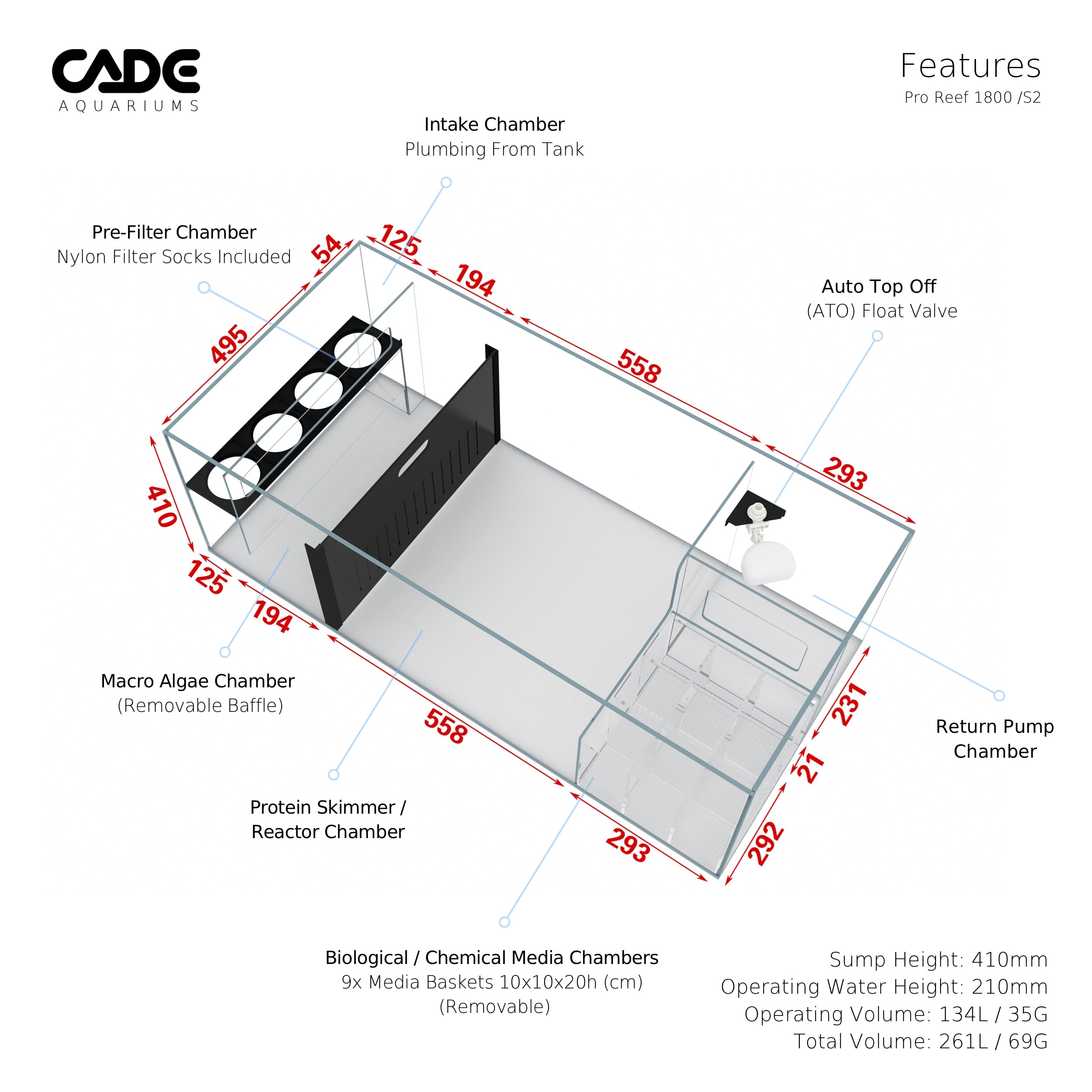Rovert
Premium Member
Per another message, I'm returning to the hobby after nearly 15 tankless years.
Back "in the day", deep sand beds (DSB) and 'Plenum' systems were quite popular as it was claimed the anaerobic layer aids in full nitrogen cycle (breaking down nitrates) and even phosphate cycle breaking down PO, thus reducing the need for additives.
In times past, I've had a 72g Bowfront mixed reef and 55g FOWLR both with deep sand beds to which I attribute my success in never having ick (ich) or other parasites plague the animals. I also happen to just like the looks of a sand bed, a bare bottom just doesn't appear natural to me, so there's going to be sand in there one way or another.
My next tank will be ~250g mixed reef and I'm debating between the Waterbox and the Cade aquariums. Both are quite similar in features and price, but what concerns me is that the low weir inlet of the Cade does not allow for a deep sand bed which is typically at least 4"-6" in depth.
Can you folks share your viewpoints on DSB and any new - which is to say in the last 10+ years - research which goes either way? It seems DSB has fallen out of favor and if that's the case, I'd like to understand why - is it the cost of the sand? New research? Perhaps something else?
Thanks in advance!
Back "in the day", deep sand beds (DSB) and 'Plenum' systems were quite popular as it was claimed the anaerobic layer aids in full nitrogen cycle (breaking down nitrates) and even phosphate cycle breaking down PO, thus reducing the need for additives.
In times past, I've had a 72g Bowfront mixed reef and 55g FOWLR both with deep sand beds to which I attribute my success in never having ick (ich) or other parasites plague the animals. I also happen to just like the looks of a sand bed, a bare bottom just doesn't appear natural to me, so there's going to be sand in there one way or another.
My next tank will be ~250g mixed reef and I'm debating between the Waterbox and the Cade aquariums. Both are quite similar in features and price, but what concerns me is that the low weir inlet of the Cade does not allow for a deep sand bed which is typically at least 4"-6" in depth.
Can you folks share your viewpoints on DSB and any new - which is to say in the last 10+ years - research which goes either way? It seems DSB has fallen out of favor and if that's the case, I'd like to understand why - is it the cost of the sand? New research? Perhaps something else?
Thanks in advance!

